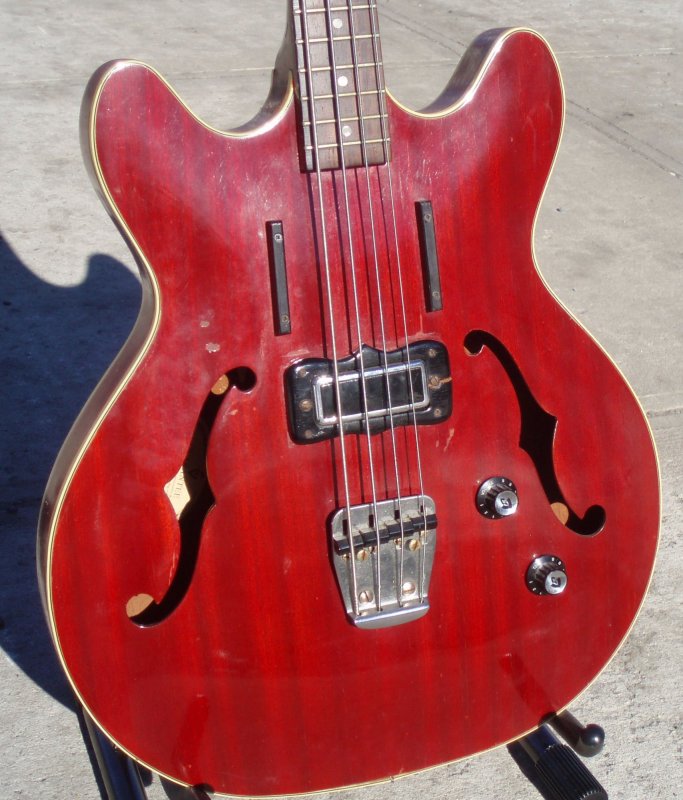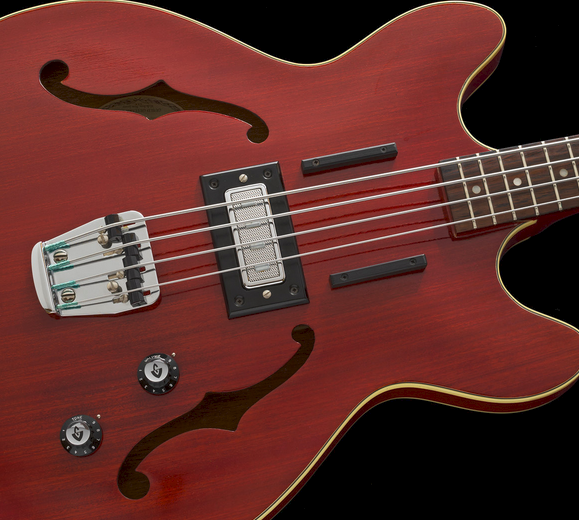Without having made any measurements I always assumed what made the sweet spot sweet was where the PU was located relative to string harmonics. But what is driving my statement is just the string length and where the magnets are along that length not the body construction or any of the other factors that could, perhaps, be contributing.
See
http://www.buildyourguitar.com/resources/lospennato/index.htm
I note that the Gibson Grabber circa 1973 and later had a sliding pickup so the player could find the sweet spot for their playing. In practice, I don't recall many people actually adjusting with any frequency - it was more find something that works and then set and forget.
I always put "sweetspot" in quotations because I think the word confuses and misleads people into thinking exactly what the article you linked seems to be warning of at certain points; there is no such thing as a mathematically correct/ideal pickup position on a mass-produced instrument. I say mass-produced, because there might be a way to determine an optimal position for a pickup or set of pickups based on the area of the fretboard that gets the most play by the specific musician who will be playing the bass. Some guys may spend 99% of their time playing between open notes and the fifth fret. With that info in mind, you could find a most ideal pickup position (or "sweetspot") for that player, by focusing on his most frequented fret positions' string harmonic peaks and valleys. That data however won't work for a guy like Phil Lesh who's all over the fretboard when playing, which may also be why the adjustability of resonant peak (Q factor) becomes wonderfully useful in Alembic style filter preamps. Additionally, some pickups exhibit relatively narrow frequency response curves that limit the prominence of different harmonics , plus as soon as you're running 2 or more pickups simultaneously, they interact with each other and you start getting elements of frequency cancellation in your signal, plus the actual position where the string is plucked/picked affects harmonic emphasis -- so those all throw another series of left-handed monkey wrenches into the "sweetspot" gears.
The reason I put a lot of emphasis on wood and construction of particular instruments (earlier in regard to the Serek Midwestern bass I owned) is in large part due to my experience of "dead-spots" and "wolf-tones", which are found on different notes/frets, to varying intensity, from bass to bass, regardless of factory specs. They may occur in the same general areas most frequently (it seems dead spots are often most notable in the 5th-9th fret range on the G string of an electric bass), but will still vary due to the specific resonant qualities of the particular pieces of wood used and how they are attached to each other.
The other factor that will affect string harmonics is the specific type of string and it's construction. Flatwounds, roundwounds, tapewounds, etc., but also hex core VS. round core, and of course the specific formula of metals used in the string, will all affect how a string vibrates and what harmonics will be most prominent.
*
I should note that my "experience" with these phenomena are all just mental notes on what my ears tell and have told me and nothing that I've charted and analyzed mathematically. So they may just be my "truths", but none the less, here for y'all'n's consideration(s).
Finally, I'm not sure if my mention of the fretboard/frets muddied the waters for anybody, but just to clarify, noting the pickup poles' position relative to a fret's position is essentially the same thing as noting a specific position along the speaking length of the string, as the position of the 21st fret will always be in the exact same position along the speaking length of the string (on a properly intonated instrument). Might as well throw in a few more "positions" for a grand finale...
position position position pOsItIoN position POSITION

